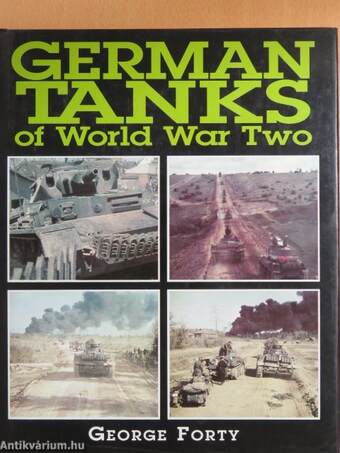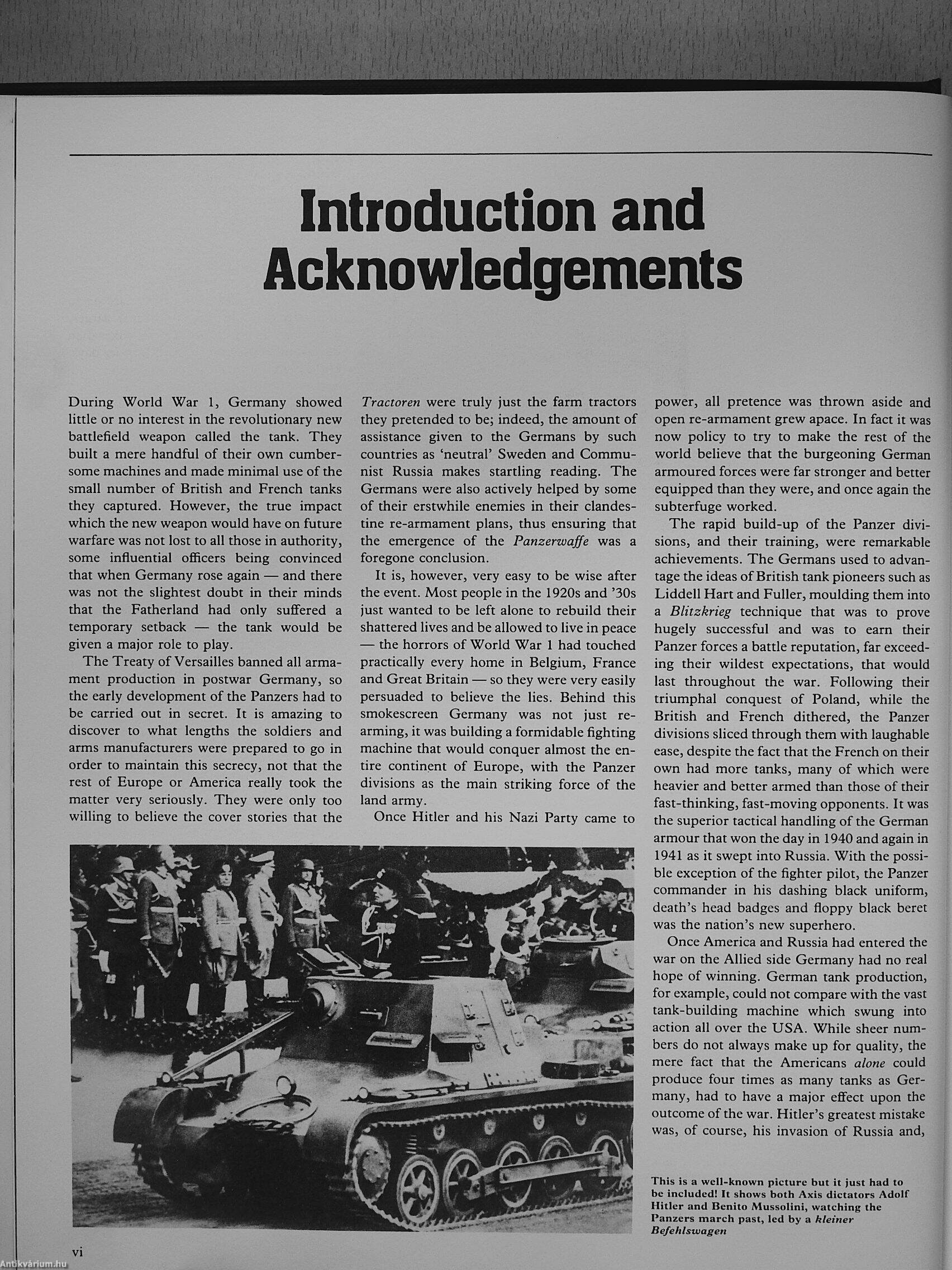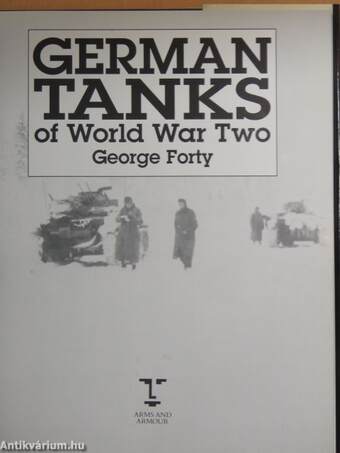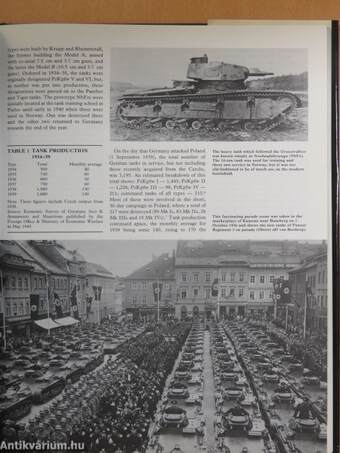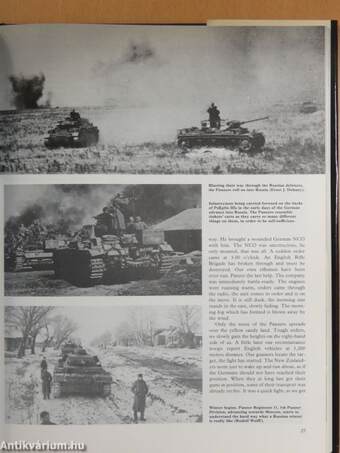1.067.715
kiadvánnyal nyújtjuk Magyarország legnagyobb antikvár könyv-kínálatát

VISSZA
A TETEJÉRE
JAVASLATOKÉszre-
vételek
German Tanks of World War Two
| Kiadó: | Arms and Armour Press |
|---|---|
| Kiadás helye: | London |
| Kiadás éve: | |
| Kötés típusa: | Fűzött kemény papírkötés |
| Oldalszám: | 160 oldal |
| Sorozatcím: | |
| Kötetszám: | |
| Nyelv: | Angol |
| Méret: | 28 cm x 23 cm |
| ISBN: | 1-85409-438-6 |
| Megjegyzés: | Fekete-fehér fotókkal gazdagon illusztrálva. |
naponta értesítjük a beérkező friss
kiadványokról
naponta értesítjük a beérkező friss
kiadványokról
Előszó
TovábbFülszöveg
When the Panzers rolled into Poland in 1939, France in 1940 and then North Africa and Russia in 1941, their speed of movement and adept handling gave them a reputation of invincibility. When they encountered the Soviet T-34 it came as a great shock, and strenuotrs efforts were devoted by German industry to designing and producing better armed and armoured tanks to coimter them, leading to the Panther, the Tiger II and their variants.
In this book George Forty describes the design and constmction of aU German tanks of World War Two, from the diminutive Pz Kpfw I to the 'superheavy' prototypes that existed in 1945, such as the Maus. He presents details of their amiour, armament, power plants, suspension and other facts necessary to an imderstanding oí their use in battle, supported by dozens of rare photographs.
The book's main emphasis is upon action, and there are numerous accounts - from both the German and the Allied point of view - of individual engagements, which show how... Tovább
Fülszöveg
When the Panzers rolled into Poland in 1939, France in 1940 and then North Africa and Russia in 1941, their speed of movement and adept handling gave them a reputation of invincibility. When they encountered the Soviet T-34 it came as a great shock, and strenuotrs efforts were devoted by German industry to designing and producing better armed and armoured tanks to coimter them, leading to the Panther, the Tiger II and their variants.
In this book George Forty describes the design and constmction of aU German tanks of World War Two, from the diminutive Pz Kpfw I to the 'superheavy' prototypes that existed in 1945, such as the Maus. He presents details of their amiour, armament, power plants, suspension and other facts necessary to an imderstanding oí their use in battle, supported by dozens of rare photographs.
The book's main emphasis is upon action, and there are numerous accounts - from both the German and the Allied point of view - of individual engagements, which show how the different types of tanks were used tactically. These give the reader a vivid impression of "being there'.
In addition, there is a great deal of valuable inlormoUon on the build up of the panzer arm, its organisation and training; and on tank production, including a fascinating report on the Henschel factory in April 1945.
As weU as the tanks themselves, the author describes the variants buat on their chassis, such as self-propelled guns, command and observation vehicles, engineer, recovery and other types.
Meticulously researched and documented by one of the world's foremost authorities on armoured warfare, German Tanks oí World War Two vrill be a valuable addition to the library of the many thousands for viihom it is a perennially fascinating siibject. Vissza
Témakörök
- Idegennyelv > Idegennyelvű könyvek > Angol > Műszaki
- Idegennyelv > Idegennyelvű könyvek > Angol > Történelem > Európa története > Egyéb
- Történelem > Idegennyelvű > Angol
- Történelem > Kézikönyvek > Albumok
- Történelem > Kontinensek szerint > Európa, európai országok története > Nyugat-Európa > Németország
- Történelem > Legújabb kor > II. világháború > Hadtörténet
- Történelem > Hadtörténet > Fegyverek, fegyvernemek
- Műszaki > Idegennyelv > Angol
- Műszaki > Hadászat, hadtörténet
George Forty
George Forty műveinek az Antikvarium.hu-n kapható vagy előjegyezhető listáját itt tekintheti meg: George Forty könyvek, művekMegvásárolható példányok
Nincs megvásárolható példány
A könyv összes megrendelhető példánya elfogyott. Ha kívánja, előjegyezheti a könyvet, és amint a könyv egy újabb példánya elérhető lesz, értesítjük.



